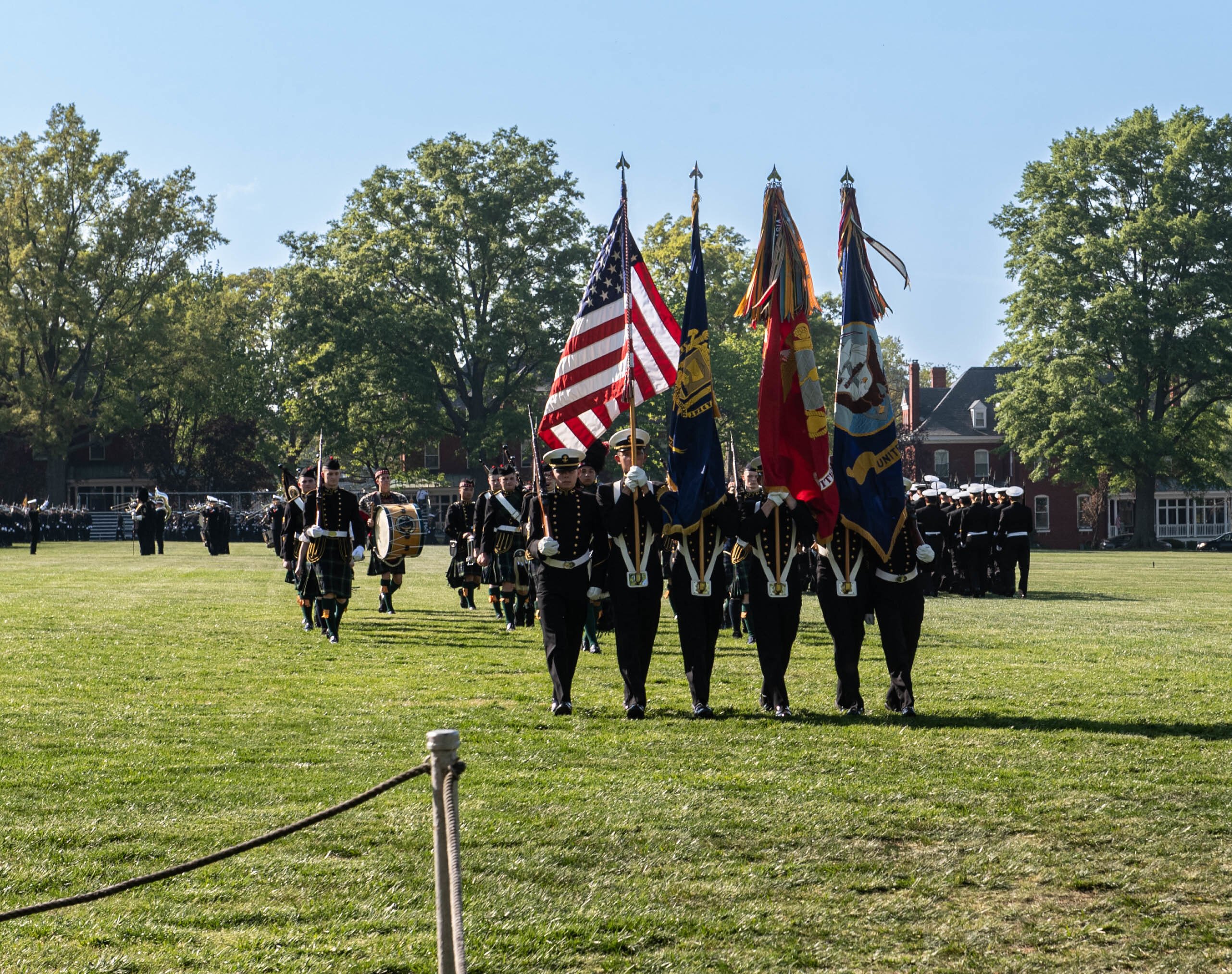It is one of the enduring symbols of the Yard - a 21-foot piece of granite that has stood here since 1860, bridging the U.S. Naval Academy’s past and present with art and awe. Famous for its riotous part in helping Plebes ascend to fourth-classmen status, it is more commonly a place of quiet contemplation that aptly frames views of the historic and beautiful USNA Chapel. But do you know the full story of the Herndon Monument? It may seem as tall as the obelisk itself, but rest assured, it’s based on a true tale of unbelievable bravery that captures the very mission of the Academy.
Related: One of the Greatest Struggles You’ll Ever See: The Herndon Climb
Where It All Began
It was September 9, 1857, and Commander William Lewis Herndon was shepherding 477 gold-seeking passengers and 101 crew members aboard the "Ship of Gold," the S.S. Central America, from California to New York City. They had left Colón, Panama less than a week earlier, carrying about 30,000 pounds of gold discovered during the California Gold Rush (an amount valued at nearly $930 million today). While traversing the Atlantic off the coast of Cape Hatteras, North Carolina, disaster struck. A devastating hurricane shredded their sails, flooded the sidewheel steamer, and shut down the boiler. As the situation became desperate, the bilge pumps failed, and the paddle wheels stopped working, Herndon ordered the crew to invert their flag, signaling distress. To their dismay, a passing ship did not heed their call.
Monumental Heroism
What happened next was detailed in survivor accounts. Commander Herndon directed a bucket brigade to remove water throughout the night. He bravely and candidly communicated the grim reality, instructing the crew to prioritize saving women and children. As five lifeboats ferried passengers to the nearby brig Marine and another schooner, Herndon remained calm and resolute, inspiring hope among those aboard. His steadfast leadership saved 149 people (including some men) and three more people who were rescued from a lifeboat the following week.
Herndon, however, went down with his ship - an act of tremendous heroism that was later recognized by Matthew Fontaine Maury, USN, when he reported the sinking to the Secretary of the Navy. Maury paid tribute to Herndon’s unwavering duty, stating: "The law requires every Commander in the Navy to show himself a good example of virtue and patriotism; and never was example more nobly set or beautifully followed. Captain Herndon, by these noble traits which have so endeared his memory to the hearts of his countrymen, and won the respect and admiration of the crew and passengers of that ship in such a degree as to acquire an influence over them that was marvelous in its effects.” Herndon’s sacrifice remains a testament to the honor and courage expected of naval officers.
Related: USNA Hero Highlight: Commander William Herndon
Making the Herndon Monument - and the Herndon Climb
In 1860, the U.S. Naval Academy erected the Herndon Monument, known simply as "Herndon." Inscribed with just his last name on one side of the obelisk and the date of the ship’s sinking on the opposite, the monument quickly became a symbol of perseverance, legend, and legacy.
In 1962, an enduring tradition began when the Class of 1962 recorded how long it took them to climb the monument and retrieve a dixie cup placed on top by an upperclassman. The challenge took just 12 minutes. Over the years, this feat has become more difficult, as upperclassmen from the 1st Company apply vegetable shortening to the obelisk, making the climb incredibly slippery and far more challenging.
Each year, the midshipmen of the company who won the grueling 14-hour Sea Trials to earn the title of "Iron Company" lead the plebes as they rush toward Herndon. Using teamwork, the plebes construct a human pyramid to scale the monument and replace the dixie cup with an upperclassman’s cover, a Herndon capper, officially marking their transition from plebes to fourth-classmen.
The fastest recorded Herndon Monument climb took just 1 minute and 30 seconds (Class of 1972, when no grease was used), while the slowest climb took a grueling 4 hours, 5 minutes, and 17 seconds (Class of 1998, when the dixie cup was glued and taped down). Regardless of the time, the Herndon Monument climb and its pinnacle achievement remain a cherished moment among the midshipmen - one that solidifies their resilience and determination after an arduous Plebe Year. When they finish the job, they become “Plebes no more!”
Experience History Here
As you stroll across the Yard, the Herndon Monument stands tall, casting a striking silhouette against the quadrangle and inviting visitors to pause and reflect on its storied past. From honoring a naval hero who sacrificed everything to symbolizing the triumph of the plebes who conquer it each year, Herndon is a true cornerstone of U.S. Naval Academy history, presiding over the historic journey of the midshipmen.
The next time you visit the Yard, take a moment to see the monument up close and experience the whispers of history. When you take a USNA tour, shop at Yard stores, or dine at restaurants on the Yard, you’re also directly supporting the midshipmen who dedicate themselves to serving our country. Your contributions help fund extracurricular activities like the arts, music, theater, club sports, and more. Be a part of living history and witness the legacy that continues to unfold at the U.S. Naval Academy. Come visit the Herndon Monument and experience the lure of the Yard!
-1.png)










